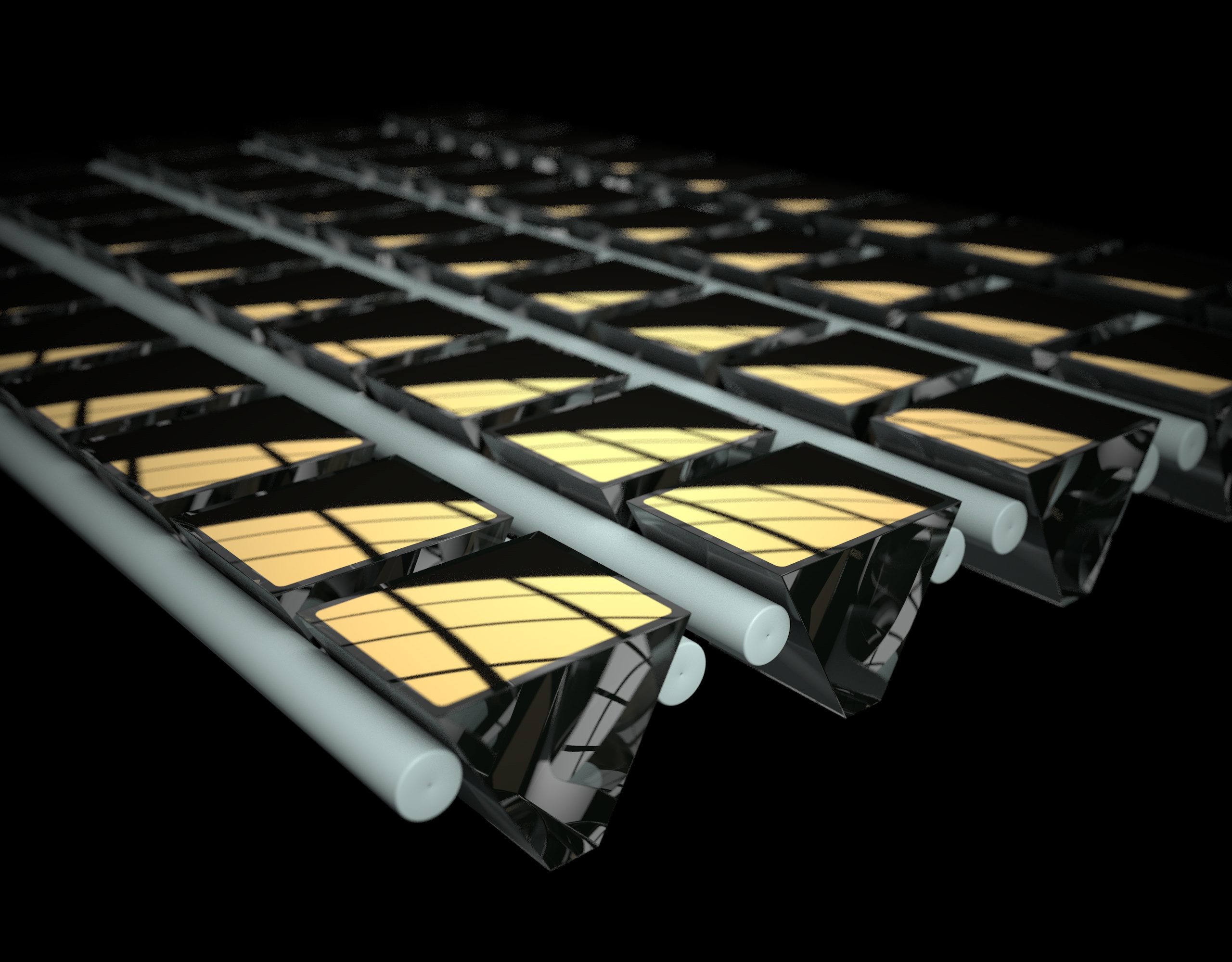Laboratory of Advanced Technology
A Collaboration between Academia and Industry
Insights &
Updates
Interested in our services ?

Fig. 1: Batch of SPR glass prisms with high-quality gold thin film sensing layer created at the LTA for virus detection ©Xavier Ravinet
The LTA contributes to the research on the Covid-19
To achieve optimal virus detection – such as the Covid-19 – using surface plasmon resonance (SPR), a leading SPR manufacturer is relying on glass prisms with a high-quality gold thin film sensor custom grown in the LTA laboratory (Fig.1).
Optical biosensors based on SPR – a high sensitive optical method of analysis – enable unprecedented real time investigations of interacting biomolecules (nucleic acids, proteins, peptides). Ground-breaking studies highlight the capabilities of modified SPR-based imaging techniques for the detection of single viruses and for the visualization of viral binding events. Optimized SPR microscopy with digital background subtraction allows the precise observation of particles only a few tens of nanometres in size (20 – 200nm).
Most viruses range between 20nm to 400nm in diameter, with coronaviruses, including the Covid-19, measuring around 100nm. They are detected in the SPR Kretschmann geometry, where light travelling through a prism is reflected from the backside of the gold coated face (Fig. 2). The properties of the reflected light change depending on the species binding to the outer-side of the reflecting gold layer. Using a CCD detector, the whole coated surface can be monitored, thus allowing the analysis of up to several thousand surface processes simultaneously.

Fig. 2: Schematics of the Kretschmann surface plasmon resonance (SPR) geometry
The sensitivity of the above SPR virus detection scheme critically depends on the quality of the gold thin film. The coating characteristics, such as thickness and roughness of the gold layer, strongly influence the SPR signal. Defects and inhomogeneities cause artefacts which affect the plasmonic properties. State-of-the-art coating technology is thus needed to guarantee the sensitivity of the sensor unit, especially for particles below 100nm in size.
Producing such films requires specific equipment and multiple expertise in thin film growth, in AFM microscopy for surface characterization, in profilometry and X-ray analysis for film thickness calibration, among others.
The LTA was able to provide timely innovative support for this leading SPR manufacturer owing to its simple organization and single point of entry to access unique competences of the Faculty of Science of the University of Geneva and HEPIA of the HES-SO Genève.
